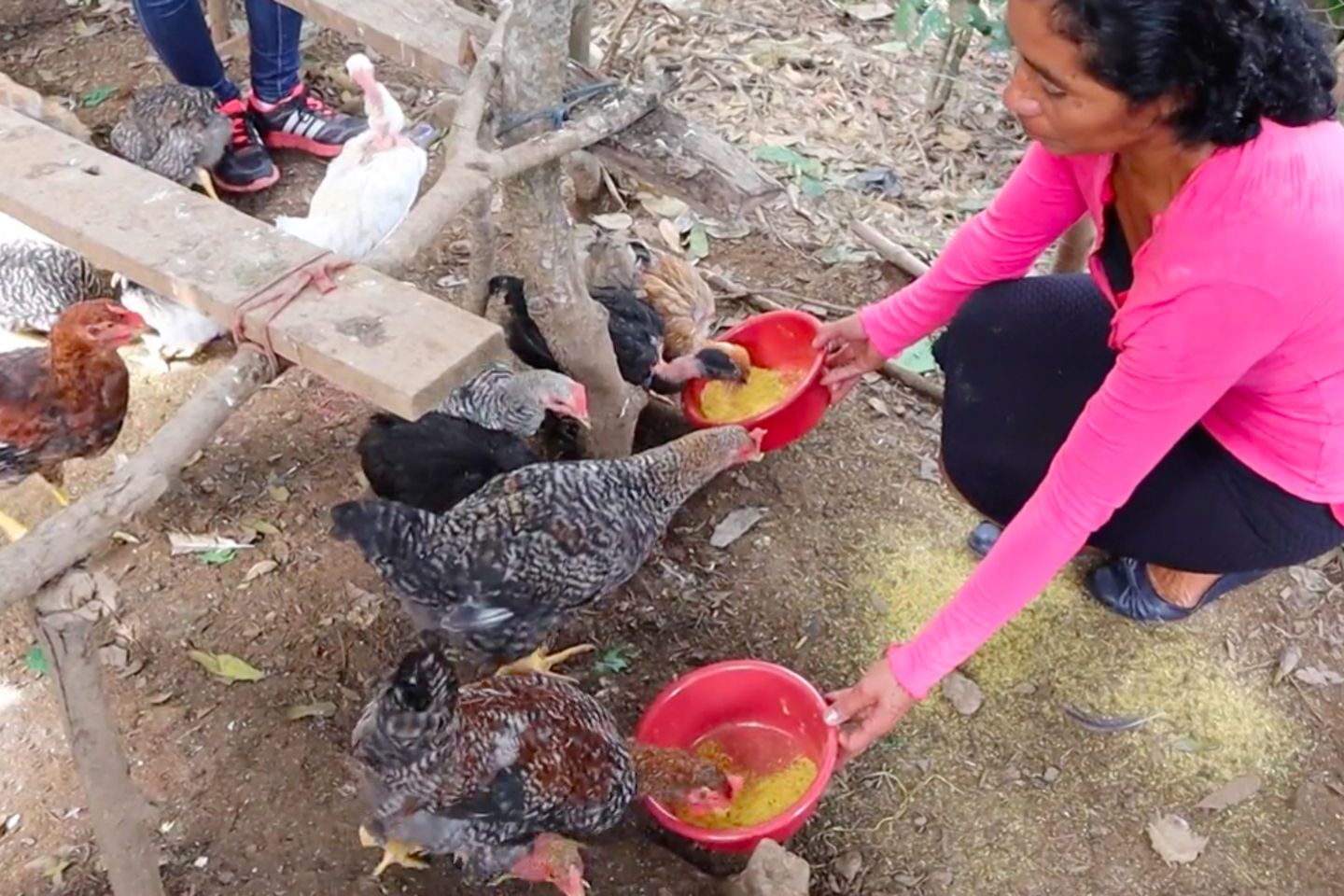
Twenty centimeters. That is the average height difference between 19-year-old males born in Guatemala and the Netherlands, according to a recent study by the Imperial College of London. This growth gap, which places Guatemalan youths among the shortest in the world, reflects the serious problem of malnutrition that affects 46.5% of minors in the Central American country.
The problem is especially stark among its 6.5 million indigenous peoples, who make up almost 44% of the total population. The Chortí people of the department of Chiquimula, a place of astonishing beauty and rugged landscapes, are a case in point.
The Chortí have lived among the folds of Chiquimula’s mountains for centuries, managing to preserve their customs through natural isolation. But that same seclusion has also affected their living conditions. Poverty, migration and food insecurity are some of the main challenges they face, now exacerbated by the effects of climate change that have caused increasingly intense and prolonged droughts in an area known as the Dry Corridor of Central America.
Chortís often go hungry from June to October, when family food reserves are depleted, as their drought-stricken crops prove insufficient to support them. And then there are especially bad years, like 2012, when the El Niño weather phenomenon triggered a dry spell that lasted for four years and ruined up to 70% of corn production.
As malnutrition indicators soared, it became vital to find a sustainable solution that would improve climate resilience ensure food security, and respect the worldview of the Chortí. Thus was born the Climate Adaptation Model, an innovative program with two fundamental pillars: women and “naked-necked” chickens.
“Chortí women play a very important role in the implementation of strategic activities for food security and income generation, such as raising small livestock, poultry, pigs, etc. And these can represent a significant income for families that do not have other means of making a living,” explains Omar Samayoa, a senior specialist on climate change at the Inter-American Development Bank (IDB). The promotion of gender equity and job opportunities for women is one of the pillars of the institution’s Vision 2025 strategy.
Through the Climate Adaptation Model, Chortí women received training that improved their skills in raising egg-laying poultry, from building coops to vaccinating birds. They also learned to cultivate vegetable gardens, produce grains from community seed banks, understand the nutritional value of native species for food for both families and birds, and manage forests by combining trees with crops. After graduating from the training program, each participant received 10 hens and two roosters to begin production.
Results came swiftly. A year on Amarilis Vásquez, one of the participants proudly tells of how her flock has grown to more than 25 birds and of how they have changed her life. “I have supported my home, dressed my children, bought food and school supplies. When there have been illnesses, I have been able to sell birds and buy medicines. Soon we will sell more to buy shoes."
The Chortí women have taken charge of the program’s continuity, committing to pass on the knowledge and train more women, giving the next generation the same amount of birds they initially received. Says Brenda Ramírez: “It’s like forming a chain where you pass on what you received and still have birds to benefit. When we face a need, we sell a hen, and now our children can eat eggs and broth. That gives them food security. The birds meet my needs and those of my family.”
Is it possible to speak of innovation when it comes to raising chickens? Probably not, if that were all that the program did, but the main point was to create a synergy between actors that allowed the project to be strengthened and scaled, as well as to ensure its sustainability. The local public university recovered genetic material from native birds and established a municipal breeding center; families used local materials and community promoters advised them, for example, with the vaccination of birds; a commitment was made to pass on the knowledge and the same resources to other families, and community schemes were promoted to ensure the provision of native seeds.

To date, 6,261 families have gone through this program, generating about 3.2 million dollars a year for the sale of meat, eggs, corn, and beans, as well as income received from forestry incentives for the recovery of 5,000 hectares of forest cover in critical watersheds.
The model has had a direct impact on the food and nutritional security of the population, specially for girls: 36% increased their weight by 27% and their height by 23% thanks to the consumption of vegetable and animal protein, according to an evaluation of the program. It also had an effect on women's participation in access to economic incentives, increasing by 24% their participation in forestry incentive programs and generating their own income from the sale of wood, firewood, coffee or basic grains. María Elena Vázquez, another beneficiary, sees it this way: “When they talk to us about food insecurity, what they are doing is teaching us how to work”.
Some 5 million people live in poverty or extreme poverty in the Dry Corridor of Central America, a population highly vulnerable to the effects of climate change. And while chickens can’t fly, good ideas do. "The program, developed as a pilot project in Guatemala, can be adapted to local conditions, either by using other species of native animals and plants, or even by additional components such as improved cooking stoves, or access to water and sanitation," says Aymé Sosa, a climate change consultant at the IDB.
To learn more about the Climate Change Adaptation Model program you can visit the project page here.
